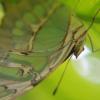Wow, Cameron, thanks so much. Very, very interesting! A few questions.
What I did was literally find a fire and nest (wasn't hard haha), and dig it out (going a good ways underground to not miss the queen), and put the dirt and ants into a large round rubbermaid container. I then put a heat lamp on one side to make sure the ants would move to the other. Then I slowly with a hand spade (I think that is what it is called lol) shoveled dirt onto the top of another rubbermaid container and sifted through everything. Pulled out tons of alates. I also pulled out several alate looking ants without wings. When I found the first one I assumed that was the queen. But, I thought it was weird - none of the ants were paying much attention to her. Finally, I shoveled out a bit of dirt that had tons of brood, and a HUGE concentration of ants in one place. There was another wingless alate looking ant there. Wherever she goes, tons of ants follow her and swarm around her at all times. So I'm 99% sure that is the queen.
What might the other wingless alate-looking ants be? I thought fire ants where generally one queen per colony. Might those others be the sub-queens that can start new colonies?
And your drip method is basically a huge short-cut for my method correct? I bet I killed more ants using my method than your drip method haha.
Thanks so much!
S. invicta colonies are monogynous where they're endemic, but many colonies are polygynous in North America, which has greatly benefited their expansion. It's very likely that a colony you collect will have multiple queens; but you may find other things as well. Some insects have evolved to coexist with ants, and even look like them! When I lived in Georgia, I would occasionally find rove beetles associated with ant colonies.
Drip extraction is certainly not my method, lol, but I do use a modified method for collecting one of the species I work with in Washginton. You should try it out for S. invicta. You are correct in that you'll probably kill far fewer ants, especially immature stages, using this method. It's best to wait until later in the season when most flights have occurred to collect colonies of this species, otherwise you'll probably end up with a ton of alates, which won't do you any good for keeping and will get everywhere if you do this inside.
Once you have a colony, and if it has multiple queens, you can certainly split them however you see fit; most, if not all, of the queens should actively reproduce. And most importantly, take notes! Communities of hobbyists like this one are incredibly beneficial, and you may develop an expertise in the species you keep which benefit others down the road.
Edited by Cameron C. Thomas, May 25 2017 - 10:59 PM.
![]() Presumably they can mate before their nuptial flight?
Presumably they can mate before their nuptial flight?
















